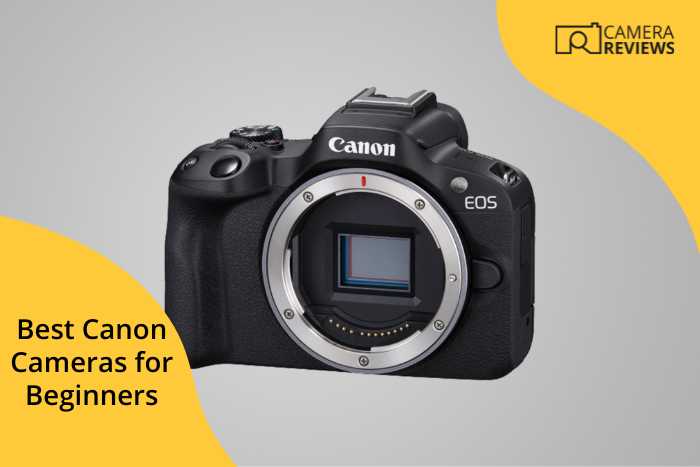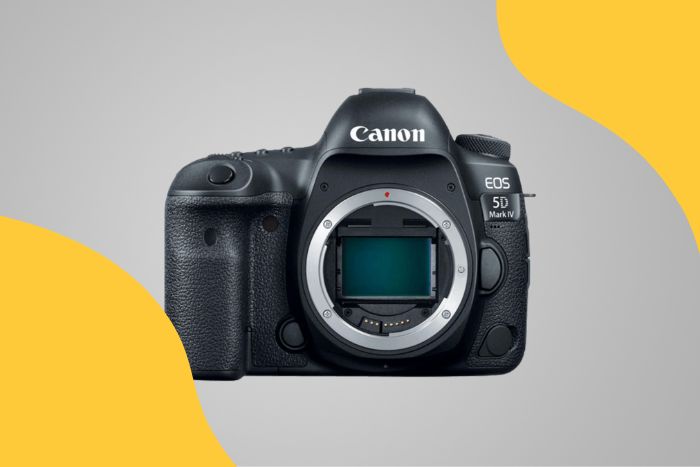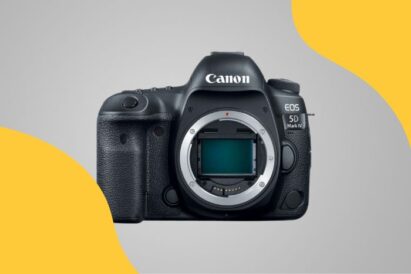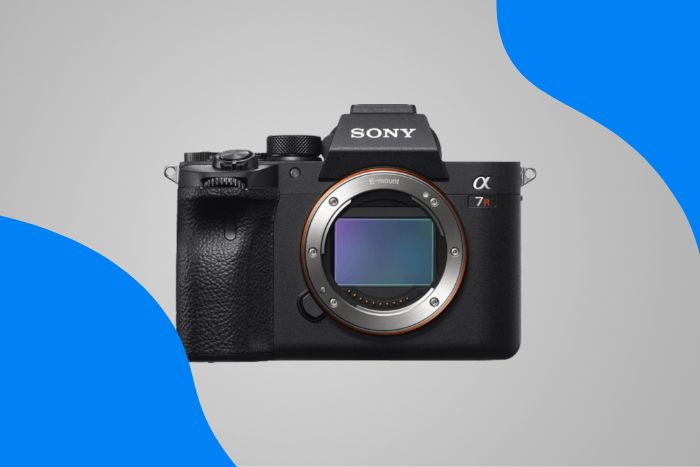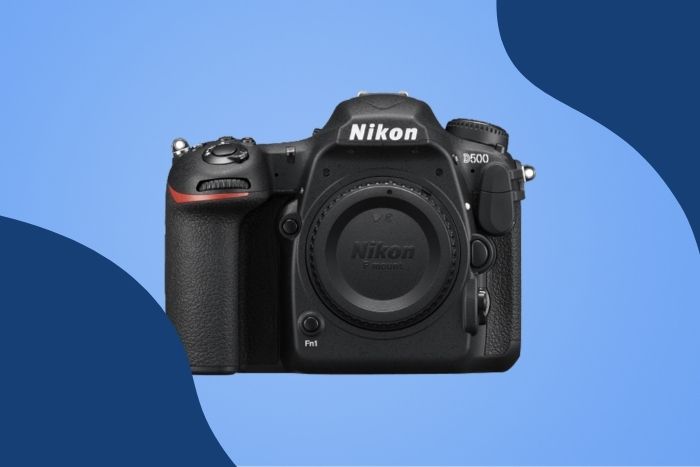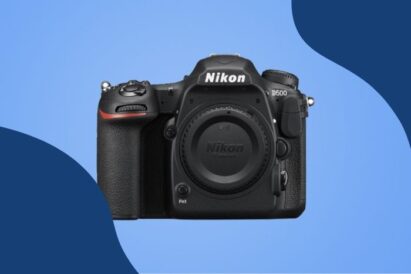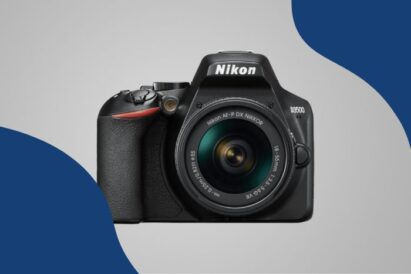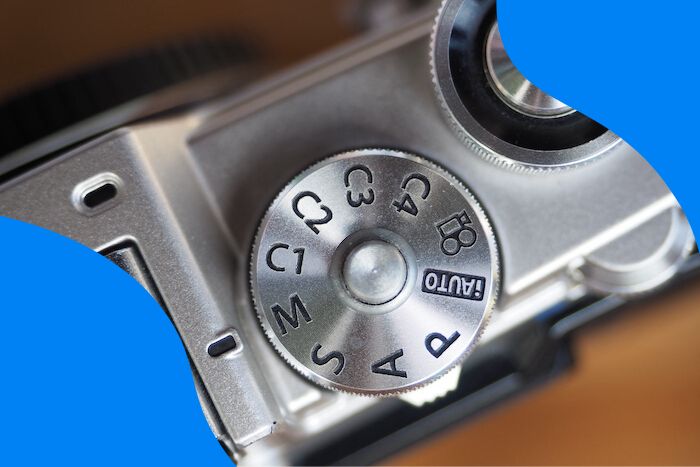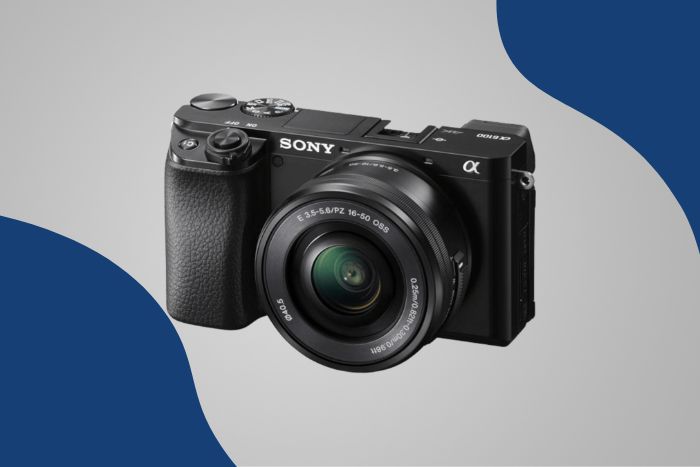If you’re just starting out and want something better than your phone, the range of Canon cameras for beginners can be mind-boggling! Our article lists the best options and the main features so you can pick the one that suits you best.
If you’re ambitious, you’ll probably want a mirrorless model like the Canon EOS R8. But DSLRs like the Canon EOS 6D Mark II or any one of the Rebel models are still popular.
If your budget doesn’t stretch that far, you can always look at compact cameras like the Canon PowerShot G7 X Mark III. Or a bridge camera like the Canon PowerShot SX70 HS is handy for wildlife photography. Read on to find the best one for you!
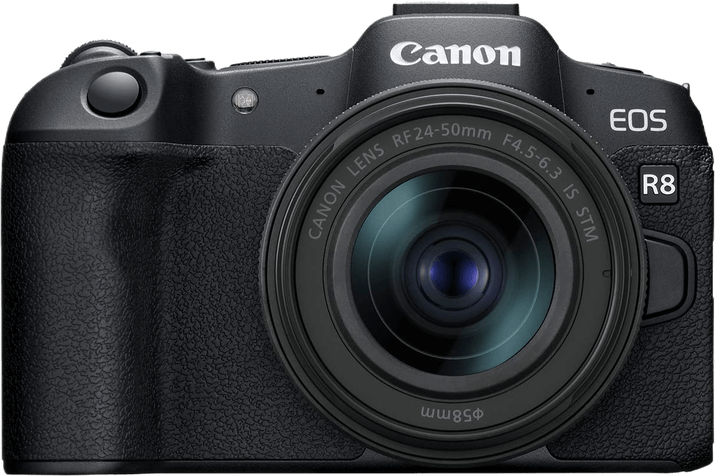
Canon EOS R8
Best Canon Cameras for Beginners
Let’s have a quick look at your beginner camera options. There’s everything from mirrorless cameras and DSLRs… to superzooms (bridge cameras) and point-and-shoot cameras.

- Canon's lightest full-frame camera body
- Pre-shooting buffer of 0.5 seconds
- Fully articulating touchscreen
- 10-bit HDR video and 40 fps burst rate
- Oversampled 4K/60p video
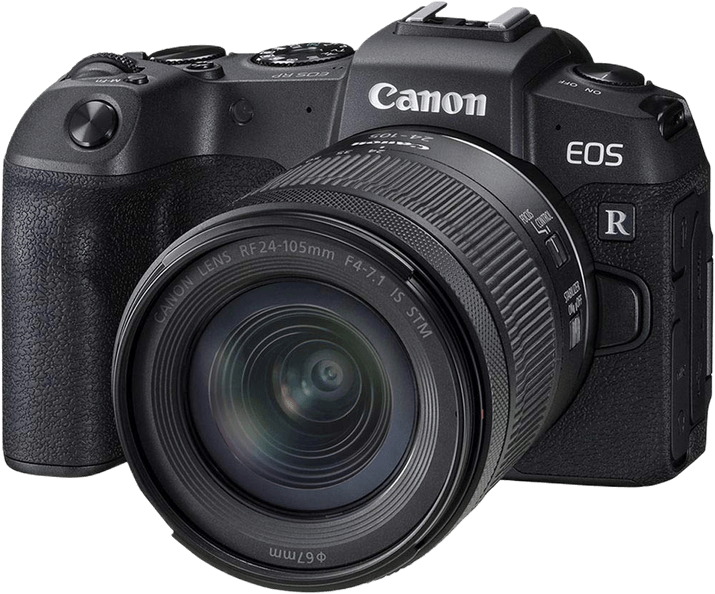
- Affordable full-frame mirrorless
- Lightweight and easy to handle
- Macro stacking and time-lapse
- Convenient Wi-Fi and Bluetooth
- Nice 4K video performance

- Powerful APS-C sensor
- Professional-standard Dual-Pixel AF
- 23 fps burst speed (electronic shutter)
- Compact and lightweight camera body
- Excellent video quality with 4K options
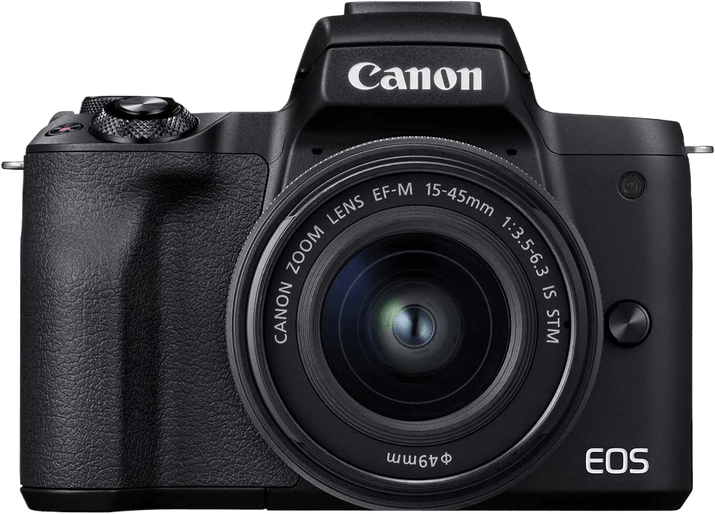
- Strong sensor resolution
- 4K and Full HD video options
- Time-lapse recording
- External mic port
- Webcam functionality

- Excellent 32.5 MP APS-C sensor
- Dual Pixel AF with eye detection
- Decent frame rate of 10 fps
- Good, 1,300-shot battery life
- Live View and 4K/30p Ultra HD video
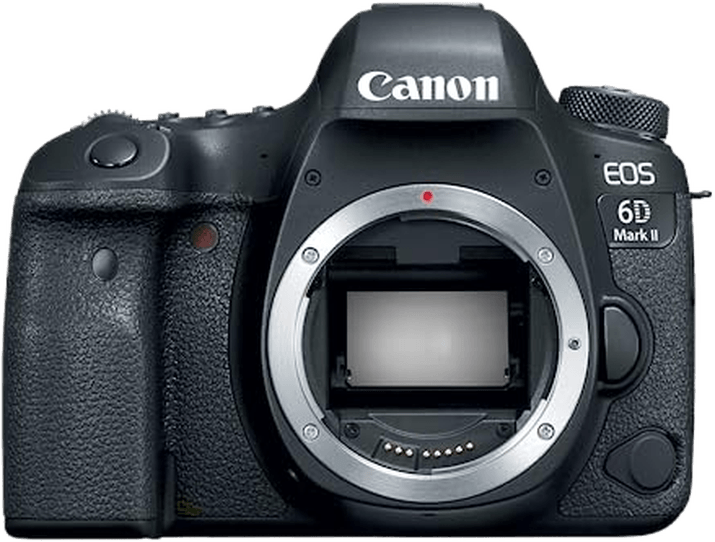
- Fantastic image quality
- Impressive 45-point AF system
- Built well and nice to handle
- Handy built-in Wi-Fi and GPS
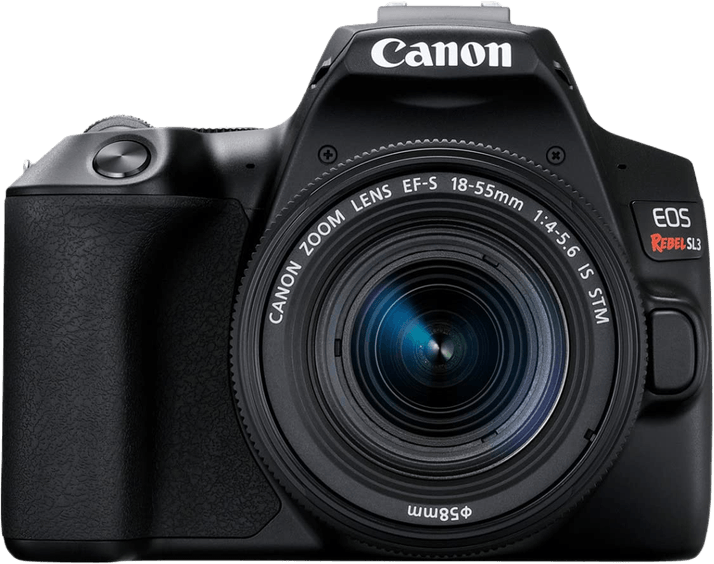
- Excellent value
- Compact body for a DSLR
- Insanely good battery life
- Fully articulating screen is helpful for capturing video
- Solid 4K video quality
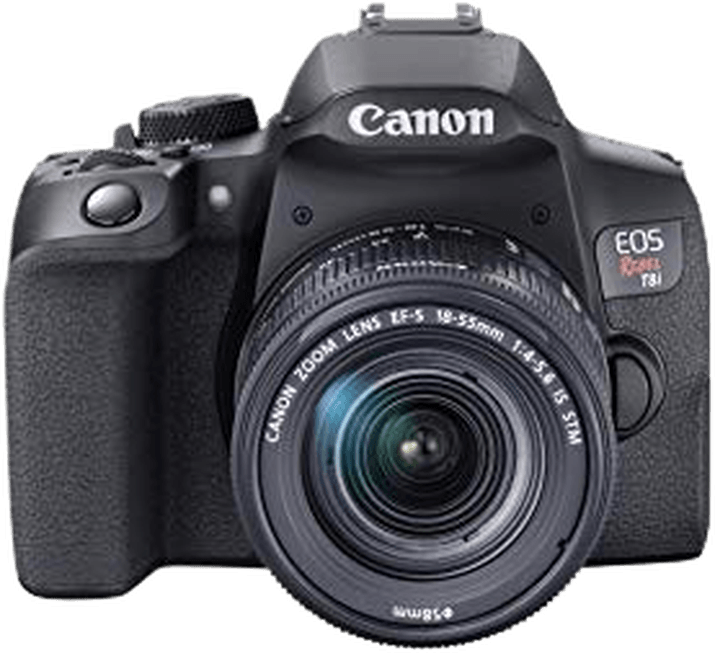
- Excellent image quality
- Face and eye-detection AF
- Great ISO range and low-light performance
- 4K/25p and Full HD/120p video
- Webcam functionality and remote shooting with smartphone

- Fast, accurate, 45-point Dual Pixel AF
- 5-axis image stabilization to help reduce camera shake
- Excellent Live View performance
- Good ergonomics and handling
- Easy Wi-Fi and Bluetooth connections
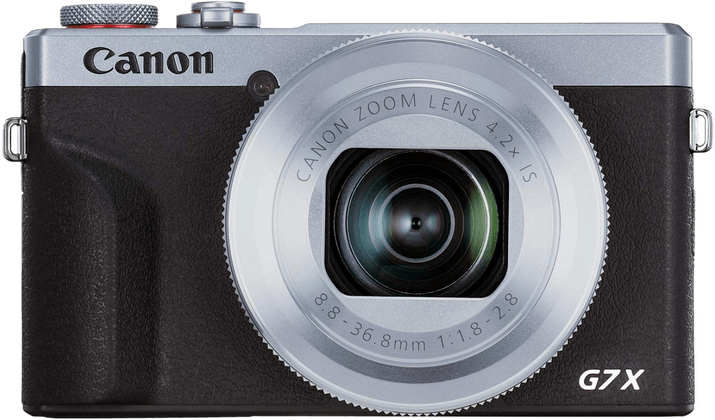
- A high dynamic range
- Fast continuous shooting speeds
- Stylish design
- Pocket-sized body
- Flip-up rear LCD touchscreen
- Live-streaming compatible

- Great price
- Superb image quality with classic Canon colors
- Optical image stabilization
- Lightweight and compact
- 4K video capabilities
11 Best Canon Cameras for Beginners in Detail!
Now we look closer at the best Canon cameras, including all their specs.
1. Canon EOS R8

| Camera Type |
Camera Type
|
| Megapixels |
Megapixels
24 MP |
| Sensor Format |
Sensor Format
|
| Sensor Size |
Sensor Size
36 x 24 mm
|
| Frame Rate |
Frame Rate
40 fps |
| Autofocus Points |
Autofocus Points
1,053 |
- Canon's lightest full-frame camera body
- Pre-shooting buffer of 0.5 seconds
- Fully articulating touchscreen
- 10-bit HDR video and 40 fps burst rate
- Oversampled 4K/60p video
- No image stabilization
- No autofocus joystick
- Low-resolution electronic viewfinder
- Only one memory card slot
- Relatively short battery life
The new Canon EOS R8 is a 24 MP full frame mirrorless model for beginners. The best feature is the 40 fps continuous shooting speed (30 fps in RAW) with half a second of pre-buffering.
It matches the image quality, autofocus (AF), burst rate, and video modes of the more expensive R6 Mark II. It also has the same fully articulated rear screen.
This Canon camera also offers oversampled 4K/60p footage and 180 fps in Full HD. And it’s packed with handy video features.
These include 10-bit HDR PQ and Canon Log 3 for color grading and extra-wide dynamic range. And the pre-recording feature lets you capture three to five seconds of footage before you press the button.
But it doesn’t have in-body image stabilization (IBIS), an AF joystick, or dual card slots. You also get a lower-resolution electronic viewfinder (EVF). And it has a much shorter battery life and a lesser-quality build.
The R8 is also available as a bundle with a 24-50mm f/4.5-6.3 STM kit lens. And the lens has image stabilization (IS).
2. Canon EOS RP

| Camera Type |
Camera Type
|
| Megapixels |
Megapixels
26 MP |
| Sensor Format |
Sensor Format
|
| Sensor Size |
Sensor Size
24 x 35.9 mm
|
| Frame Rate |
Frame Rate
5 fps |
| Autofocus Points |
Autofocus Points
4,779 |
- Affordable full-frame mirrorless
- Lightweight and easy to handle
- Macro stacking and time-lapse
- Convenient Wi-Fi and Bluetooth
- Nice 4K video performance
- 5 fps max burst is slow compared to competitors
- Relatively poor 250-shot battery life
- Doesn't function while charging
- 4K video is cropped 1.6x
The Canon EOS RP is a compact and affordable 26 MP full frame mirrorless camera with a vari-angle touchscreen. It has a higher resolution and more focus points than the R8 (our number one choice). Plus, it has focus bracketing.
But it’s powered by the older and slower Digic 8 image processor. Noise is a problem. And unfortunately, there’s no pre-shooting.
The 4 fps maximum continuous shooting speed with AF is slow. And there’s clearly a rolling shutter effect. Plus, the AF system doesn’t have animal or vehicle tracking.
The video specs also aren’t that impressive. It can capture 4K/24p video. But it comes at the expense of a heavy crop.
Video recording is limited to 30 minutes, there’s no digital stabilization, and there aren’t many exposure tools. But this camera does have HDMI, headphone and microphone ports.
Finally, file transfer is limited to USB 2.0 speeds, the LCD has low resolution, and the battery life is only 250 shots.
But despite all that, the RP is the lightest and smallest Canon full frame camera. So it’s the best Canon camera for travel photography.
It’s also priced cheaply. So you won’t have to replace all your lenses when migrating from an APS-C to a full-frame body later. The RP has the Canon RF lens mount. It has different lens kits, including one with the native RF 24-105mm f/4 L Series lens.
3. Canon EOS R10

| Camera Type |
Camera Type
|
| Megapixels |
Megapixels
24 MP |
| Sensor Format |
Sensor Format
|
| Sensor Size |
Sensor Size
22.2 x 14.8 mm
|
| Frame Rate |
Frame Rate
15 fps |
| Autofocus Points |
Autofocus Points
651 |
- Powerful APS-C sensor
- Professional-standard Dual-Pixel AF
- 23 fps burst speed (electronic shutter)
- Compact and lightweight camera body
- Excellent video quality with 4K options
- No image stabilization when taking photos or recording video
- Only has one slot for memory cards
- Body has no weather sealing
- 4K/60p video is cropped
The Canon EOS R10 is an entry-level 24.2MP APS-C mirrorless camera, the mirrorless equivalent of the Rebel T8i. It’s small and light enough to be a good travel camera. And it’s affordable enough to be a good second Canon camera body.
The latest Digic X processor offers rapid autofocus and subject tracking for people, animals, and vehicles. But there’s no IBIS, and the buffer isn’t that deep. So it’s not ideal for sports or wildlife photography.
You also get a 15 fps burst rate with the mechanical shutter. And it has 23 fps with the electronic one, including half a second of pre-shooting. It rises to 30 fps if you can put up with cropping your RAW files by 75%!
You can shoot oversampled 4K video up to 30p and 4K/60p (with a crop). You also have the option of 10-bit HDR PQ footage.
But this Canon camera only has one memory card slot and a small viewfinder. And there are also only two native zoom lenses. There’s the RF-S 18-45mm f/4.5-6.3 IS STM or the RF-S 18-150mm f/3.5-6.3 IS STM.
This means you might have to put up with heavier full frame RF lenses or use a mount adapter or older EF lenses. This is the best Canon camera with an APS-C sensor.
4. Canon EOS M50 Mark II

| Camera Type |
Camera Type
|
| Megapixels |
Megapixels
24 MP |
| Sensor Format |
Sensor Format
|
| Sensor Size |
Sensor Size
14.9 x 22.3 mm
|
| Frame Rate |
Frame Rate
10 fps |
| Autofocus Points |
Autofocus Points
143 |
- Strong sensor resolution
- 4K and Full HD video options
- Time-lapse recording
- External mic port
- Webcam functionality
- 4K video is cropped
- No environmental sealing
- No sensor-shift image stabilization
- Disappointing battery life
The Canon EOS M50 Mark II (Kiss M2) is a 24 MP APS-C mirrorless compact camera. It’s well-equipped for vloggers and has a fully articulated touchscreen. It’s the last camera still being made in Canon’s M range, which the R series is replacing.
Face tracking and eye detection are fast and accurate. And the image quality is high in JPEG and RAW files.
This mirrorless camera is comfortable to hold, which is typical for a Canon body. And the touchscreen interface and full auto mode are convenient and user-friendly.
Unfortunately, the 7.4 fps burst rate is low, the rear controls are cramped, and you only get 250 shots per battery charge with the EVF.
4K video is limited to 24p, which is heavily cropped (1.5x) and can’t use Dual Pixel AF. This Canon camera supports vertical video and YouTube live-streaming (if you have over 1,0000 subscribers).
Plus, the EOS Webcam Utility software lets you use it as a webcam. And there’s no headphone jack. But this is still the best Canon camera for vlogging!
There are two RF-S STM lens kits available. One with an 18-150mm F3.5-6.3 lens and another with an 18-45mm F4.5-6.3 lens.
5. Canon EOS 90D

| Camera Type |
Camera Type
|
| Megapixels |
Megapixels
33 MP |
| Sensor Format |
Sensor Format
|
| Sensor Size |
Sensor Size
22.3 x 14.9 mm
|
| Frame Rate |
Frame Rate
10 fps |
| Autofocus Points |
Autofocus Points
45 |
- Excellent 32.5 MP APS-C sensor
- Dual Pixel AF with eye detection
- Decent frame rate of 10 fps
- Good, 1,300-shot battery life
- Live View and 4K/30p Ultra HD video
- Unreliable autofocus when using the optical viewfinder
- 4K video has a soft focus
- No in-body image stabilization
- Limited video codecs and frame rates
The Canon EOS 90D is a 32.5 MP APS-C DSLR camera. The crop sensor brings high resolution. And RAW image quality is excellent, with good dynamic range.
The metering sensor supports face detection using the optical viewfinder. The Dual Pixel AF system offers fast focus, face and eye detection, and tracking in Live View or when shooting video.
The comfy grip, weather-proofing, vari-angle touchscreen, AF joystick, and 10 fps burst rate are handy. And you can capture rather soft 4K/30p video with no crop.
But there’s no 24 fps video option in either 4K or Full HD. Digital image stabilization comes with a heavy crop. And no Log gamma option exists, like the R8. But you do get headphone and microphone jacks.
You also get good battery life and the usual Canon connectivity via Wi-Fi and Bluetooth. But autofocus with the viewfinder is hit or miss. And transfer rates are limited to slower USB 2.0 transfer.
The 90D is available with a kit lens. You can either go with the EF-S 18-55mm f/3.5-5.6 IS STM lens or the EF-S 18-135mm f/3.5-5.6 IS USM lens. Check our Canon T8i vs 90D comparison for extra info!
6. Canon EOS 6D Mark II

| Camera Type |
Camera Type
|
| Megapixels |
Megapixels
26.2 MP |
| Sensor Format |
Sensor Format
|
| Sensor Size |
Sensor Size
24 x 35.9 mm
|
| Frame Rate |
Frame Rate
6.5 fps |
| Autofocus Points |
Autofocus Points
45 |
- Fantastic image quality
- Impressive 45-point AF system
- Built well and nice to handle
- Handy built-in Wi-Fi and GPS
- Low dynamic range
- Relatively limited video capabilities
- Only one memory card slot
- No USB charging
The Canon EOS 6D Mark II is an entry-level 26.2 MP full frame DSLR camera. It boasts the usual weather sealing, comfy grip, and vari-angle touchscreen. Plus, it has Wi-Fi, Bluetooth, and GPS links.
Image quality is good, especially at high ISOs. And “Canon color” is always popular if you shoot JPEGs. But the burst rate of 6.5 fps is disappointing. The ISO limit of 40,000 is quite low. And the dynamic range at low ISOs is poor.
Dual Pixel AF works when shooting video or in Live View. But the AF system comes from the 80D, which means it’s not Canon’s best!
A 45-point all-cross-type AF system takes over if you use the optical viewfinder. And you get limited autofocus coverage when using the optical viewfinder.
Video quality maxes out at 1080/60p and is quite soft. And there’s no headphone socket. But you can create 4K time-lapse movies. And the video stabilization is good.
Again, you can conveniently buy it as a camera lens kit. There is one with an EF 24-105mm STM lens or a USM lens.
7. Canon EOS Rebel SL3 / 250D

| Camera Type |
Camera Type
|
| Megapixels |
Megapixels
24 MP |
| Sensor Format |
Sensor Format
|
| Sensor Size |
Sensor Size
22.3 x 14.9 mm
|
| Frame Rate |
Frame Rate
5 fps |
| Autofocus Points |
Autofocus Points
9 |
- Excellent value
- Compact body for a DSLR
- Insanely good battery life
- Fully articulating screen is helpful for capturing video
- Solid 4K video quality
- Only 9 autofocus points
- Lacks in-body image stabilization
- No USB charging
- No weather sealing
- 1.7x 4K crop factor
The Canon EOS Rebel SL3 (250D or Kiss X10) is an ultra-compact 24 MP APS-C DSLR camera. And it has a smaller and lighter body than the SL2.
One benefit for beginners is the Guide mode. This is like the one on the T7i. It helps you choose the correct camera settings, showing sample images and explanations until you’re ready to do without it.
You also get the typical Canon body features. It has a comfortable grip, an easy interface, and a vari-angle touchscreen.
It also has Dual Pixel AF and Wi-Fi, NFC, and Bluetooth links. And using the optical viewfinder, you even get a long 1,070-shot battery life!
But the burst rate of 5 fps is low. And the nine-point AF system using the viewfinder hasn’t improved. Battery life is also much lower in Live View. Plus, you don’t get in-camera RAW processing or USB charging.
4K video is supported in this Canon camera. But there’s a heavy crop, and you can’t use Dual Pixel AF. The image quality also isn’t impressive, and the electronic stabilization will only correct the roll, not the pitch or yaw.
You can buy different bundles, including one with an EF-S 18-55mm lens.
8. Canon EOS Rebel T8i / 850D

| Camera Type |
Camera Type
|
| Megapixels |
Megapixels
24 MP |
| Sensor Format |
Sensor Format
|
| Sensor Size |
Sensor Size
14.9 x 22.3 mm
|
| Frame Rate |
Frame Rate
7.5 fps |
| Autofocus Points |
Autofocus Points
45 |
- Excellent image quality
- Face and eye-detection AF
- Great ISO range and low-light performance
- 4K/25p and Full HD/120p video
- Webcam functionality and remote shooting with smartphone
- Fiddly control dials
- Less reliable AF in video mode
- Small optical viewfinder display
- Cropped 4K video
The Canon EOS Rebel T8i (850D or Kiss X10i) is a 24 MP APS-C DSLR camera at the upper end of its entry-level range. As with most similar Canon DSLRs, you get a comfortable grip.
But Dual Pixel AF and face or eye detection only work in Live View or while shooting video. But if you use the optical viewfinder, a 45-point all-cross-type AF system takes over. And this brings you the benefit of an 800-shot battery life!
Unfortunately, the ISO limit of 25,600, the burst rate of 7 fps, and the 310 shots per charge in Live View are on the low side. The viewfinder is also small and dark with this Canon camera. And you don’t get an IBIS system or USB charging.
You can shoot 4K video at 24 fps (with a 1.6x crop) and Full HD at 60 fps. But the latter is prone to false color artifacts and moiré. Vloggers can shoot vertical videos, though. And there’s a 3.5mm input for an external mic.
It also comes with an EF-S 18-55mm STM lens.
9. Canon EOS 77D / EOS 9000D

| Camera Type |
Camera Type
|
| Megapixels |
Megapixels
24.2 MP |
| Sensor Format |
Sensor Format
|
| Sensor Size |
Sensor Size
14.9 x 22.3 mm
|
| Frame Rate |
Frame Rate
6 fps |
| Autofocus Points |
Autofocus Points
45 |
- Fast, accurate, 45-point Dual Pixel AF
- 5-axis image stabilization to help reduce camera shake
- Excellent Live View performance
- Good ergonomics and handling
- Easy Wi-Fi and Bluetooth connections
- Unreliable intelligent AF subject tracking and recognition
- A slow burst rate
- A small viewfinder
- Plasticky build, no weather-sealing
- No 4K video option
The Canon EOS 77D (9000D or 770D) is a lightweight 24 MP APS-C DSLR camera. Like the T8i (850D), it has Dual Pixel AF in Live View or when shooting video. Plus, it has a 45-point all-cross-type AF system when using the optical viewfinder.
Sadly, the burst rate is only 6 fps with this Canon camera. Plus, subject autofocus iTR (Intelligent Tracking and Recognition ) doesn’t always work. And the dynamic range is limited.
It also has a fully articulated touchscreen and Wi-Fi with NFC and Bluetooth connectivity. If you compare it to the T7i (800D), there aren’t many differences.
It doesn’t have many custom buttons. But it does have dual control dials, an LCD on the top plate, and an AF-ON button.
Image stabilization and autofocus work well. But video quality is limited to Full HD at 60 fps. And there’s no headphone jack.
It’s bundled differently, including with an EF-S 18-55 lens.
10. Canon PowerShot G7 X Mark III

| Camera Type |
Camera Type
|
| Megapixels |
Megapixels
20 MP |
| Sensor Format |
Sensor Format
|
| Sensor Size |
Sensor Size
13.2 x 8.8 mm
|
| Frame Rate |
Frame Rate
30 fps |
| Autofocus Points |
Autofocus Points
31 |
- A high dynamic range
- Fast continuous shooting speeds
- Stylish design
- Pocket-sized body
- Flip-up rear LCD touchscreen
- Live-streaming compatible
- Soft focus at wider focal lengths
- No subject tracking in continuous shooting mode
- No electronic viewfinder
- Weak battery life for a compact
- 10 minute 4K recording limit
The Canon PowerShot G7 X Mark III is a 20 MP premium compact camera. It has a one-inch sensor and a fast, stabilized 24-100mm equivalent f/1.8-2.8 lens.
This is a handy option for anyone wanting to upgrade from a smartphone or even an enthusiast looking for a second body. Detail and noise levels are excellent in RAW. And there’s even a built-in ND filter for long exposures.
Although it isn’t a DSLR or mirrorless model, you still get the standard Canon bells and whistles. These include USB-C charging and Wi-Fi and Bluetooth connectivity.
You can also shoot at 8.3 fps or even 30 fps if you lock focus. And the buffer is nice and deep in both cases.
This Canon camera can capture cropped 4K/30p (but not 24p) and uncropped 1080 video at up to 120p. Plus, you can live-stream video on YouTube straight from the camera. Although it’s hard to set up and doesn’t always work!
Users will like shooting vertical videos. And the touchscreen flips upward for taking selfies or recording vlogs.
On the downside, there’s no EVF, and you don’t get subject tracking in burst mode. The autofocus also hunts when shooting video. And you can only charge using USB Power Delivery (USB-PD) chargers or power banks.
This is the best Canon camera if you’re looking for a compact one.
11. Canon PowerShot SX70 HS

| Camera Type |
Camera Type
|
| Megapixels |
Megapixels
20 MP |
| Sensor Format |
Sensor Format
|
| Sensor Size |
Sensor Size
6.17 x 4.55 mm
|
| Frame Rate |
Frame Rate
10 fps |
| Autofocus Points |
Autofocus Points
9 |
- Great price
- Superb image quality with classic Canon colors
- Optical image stabilization
- Lightweight and compact
- 4K video capabilities
- Slow maximum continuous shooting
- No touchscreen
- No hot shoe for attaching accessories
- No USB charging
- Cropped 4K video
The Canon PowerShot SX70 HS is a 20 MP DSLR-style bridge camera (superzoom). It has a stabilized 65x, 21-1365mm equivalent f/3.4-6.5 lens. And there is a 1/2.3-inch sensor with RAW file support.
You get five stops of shake reduction and a burst rate of 5.7 fps (10 fps with one-point AF). And you can either use the EVF or vari-angle LCD screen to compose your shots.
This is also the first Canon compact to support the new, high-quality, lossless CR3 RAW format. Plus, you get the usual Wi-Fi and Bluetooth connectivity.
Sadly, it struggles in low light. And the autofocus isn’t responsive enough for fast-moving subjects. There’s also no weather sealing or a hot shoe to attach accessories. And the LCD isn’t a touchscreen.
But you can shoot 4K Ultra HD (UHD) video at 30p. And you can use Full HD to shoot high-speed footage at 120 fps. This is the best Canon camera if you’re looking to buy a superzoom.
Our Verdict
If you’re looking for a Canon beginner camera, it has to be said that mirrorless cameras are gradually replacing DSLRs. The latest models, like the Canon EOS R8, offer a great entry point. And more and more are coming out each year.
But the 90D and 6D Mark II are still good cameras. And the Canon EOS Rebel series is very popular and affordable. Some people just prefer shooting with a lag-free optical viewfinder. So it’s up to you to decide what suits you best.
If you’re looking for a budget option, Canon produces several compact and bridge cameras in its PowerShot range. The best ones are probably the PowerShot G7 X Mark III and the PowerShot SX70 HS.

Canon EOS R8
Common FAQs and Buying Guide
We answer questions about Canon cameras for beginners to help you buy the right one.
What Is the Best Camera Type for Beginners?
If you want something better than a smartphone or point-and-shoot, mirrorless cameras are best for beginners. They’re usually light and compact, with capable AF systems and decent burst rates.
But if you prefer an optical viewfinder, you can always opt for a DSLR. The 90D offers good resolution. And its AF system even provides face detection while using the optical viewfinder.
Otherwise, there is the 6D Mark II or the Rebel cameras, which are very popular.
Is Canon Good for Beginners?
Yes. Beginners will be impressed by the image quality and color rendition of Canon cameras. And most people also like their comfortable grips. Plus, full frame DSLRs and mirrorless cameras are now aimed at beginners.
Beginners will also like features such as fully articulated LCD screens, Dual Pixel AF, and Wi-Fi and Bluetooth. Canon is the biggest camera manufacturer in the world. And there is something for everyone.

Is Canon or Nikon Better for Beginners?
There’s not much to choose between Canon and Nikon. But Canon’s Guide mode is handy if you’re an absolute beginner wanting to learn on the job.
And the popularity of Canon cameras for beginners worldwide also means they’re easy to get hold of and repair if necessary!
Both Canon and Nikon offer a full range of digital cameras for beginners. This includes compact cameras, bridge cameras, DSLRs, and mirrorless cameras.
Is Canon Rebel Good for Beginners?
Yes, it’s aimed at beginners. They’re compact, lightweight, and affordable but still offer decent functionality. Rebel models are comfortable to hold with a user-friendly touchscreen interface and a vari-angle screen.
The Rebel series is an incredibly popular range of beginner Canon cameras. The market is shifting away from DSLRs and towards mirrorless cameras. But DSLRs are still popular in North America and Europe.
The main downside is the lack of eye detection with the optical viewfinder. You also have to bear in mind the lack of an upgrade path as more and more DSLR models are discontinued.
What Does EOS stand for With Canon Cameras?
EOS stands for Electro-Optical System. This is Canon’s brand name for its range of mirrorless and DSLR cameras with interchangeable lenses. Every model in that range has the EOS prefix. Read our article on Canon naming for more.
It’s not used for Canon’s compact and bridge cameras, which fall under the PowerShot label.
If you’re not sure which camera to choose, don’t fear! You can check our guides on the best Canon cameras for sports photography, the best Canon portrait camera, or the best Canon mirrorless for video for more inspiration! If you’re not sure about the brand, read our article discussing Canon vs Sony mirrorless or Fujifilm vs Canon cameras next!


